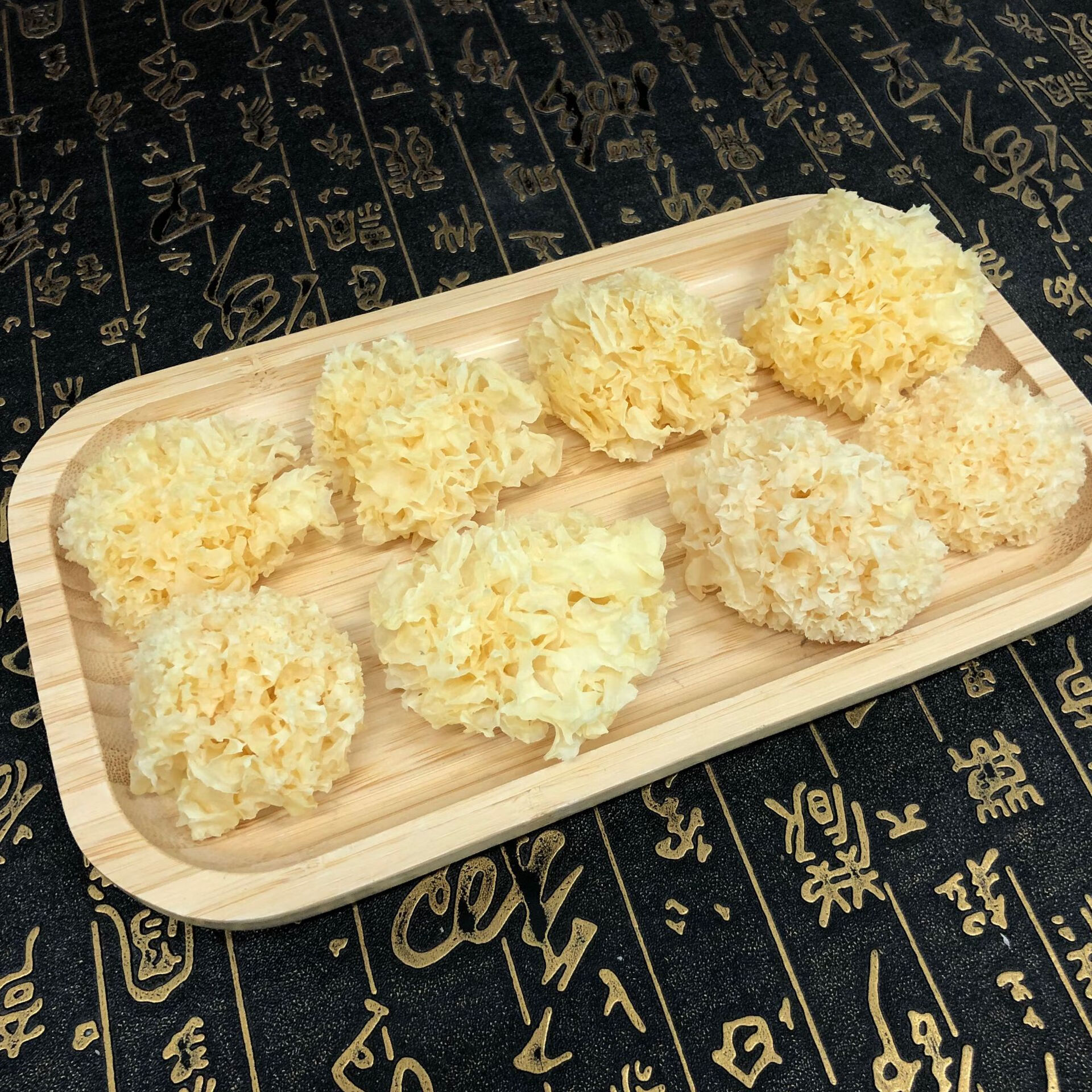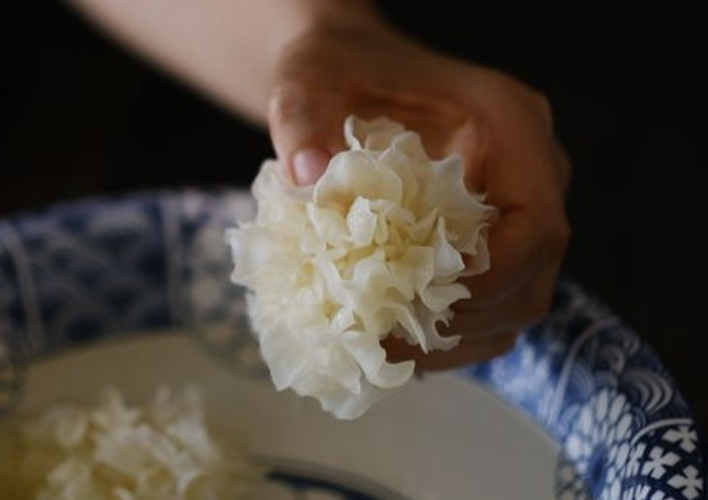
Why Log-Cultivated Silver Ear Mushroom Stands Out
2025-10-26 16:41The Premium Choice: Why Log-Cultivated Silver Ear Mushroom Stands Out

In the world of gourmet ingredients, the log-cultivated Silver Ear Mushroom (also known as Tremella fuciformisor White Fungus) holds a special place. While most commercially available varieties are grown on synthetic substrates, the traditional method of cultivating them on hardwood logs yields a product with exceptional quality, nutritional value, and sensory appeal. This article explores the key reasons behind the enduring popularity and premium status of log-cultivated Silver Ear .

1. Unmatched Sensory Qualities: Texture, Aroma, and Culinary Performance
The most immediate difference between log-cultivated and bag-cultivated Silver Ear is evident in its sensory characteristics.
Superior Gelatinous Texture and Appearance: Log-cultivated Silver Ear is renowned for its rich, gelatinous texture after cooking. Its "ears" or fruiting bodies are often smaller, more irregular in shape, and feature a natural, slightly yellowish or off-white color, which turns a translucent, jade-like white after soaking . This contrasts with the often larger, perfectly round, and uniformly white appearance of bag-grown varieties. The key differentiator is its remarkable yield of thick, sticky colloids when simmered. A small amount can produce a rich, thick, and silky soup or dessert, often described as being as thick as lotus root starch paste, whereas ordinary Silver Ear may struggle to achieve the same consistency even after prolonged cooking .
Delicate Aroma and Flavor: It carries a subtle, natural woody fragrance, a testament to its growth on natural logs. The taste is mildly sweet and clean, allowing it to absorb and complement the flavors of other ingredients in a dish, rather than overpowering them .

2. Enhanced Nutritional and Functional Value
The cultivation method directly impacts the nutritional profile of the mushroom, making log-cultivated Silver Ear a preferred choice for health-conscious consumers.
Higher Bioactive Compounds: The slow, natural growth cycle of 6 to 8 months allows the mushroom to accumulate higher concentrations of beneficial compounds . Most notably, it contains significantly higher levels of Silver Ear polysaccharides, particularly β-glucans, which are recognized for their immune-modulating and antioxidant properties . These polysaccharides are also associated with skin hydration and are sometimes referred to as "drinkable hyaluronic acid" .
Richer Mineral Content: Growing on nutrient-rich hardwoods like oak or Qinggangwood, it absorbs and concentrates a broader spectrum of minerals. Analyses show it is particularly rich in potassium, calcium, and iron, among other trace elements . The slow decomposition of the wood allows for a gradual release of minerals, leading to better absorption by the fungus .
Perceived Health Benefits: Based on these properties, it is highly valued in traditional wellness practices for moistening the lungs, nourishing the stomach, enhancing skin health, and boosting overall immunity .
3. Natural and Sustainable Cultivation Process
The method of cultivation is central to the appeal and premium status of log-grown Silver Ear.
Pristine Growing Environment: This method typically occurs in mountainous, forested areas, leveraging a natural, semi-wild environment. The logs, often placed under shaded canopies, require specific natural conditions regarding temperature and humidity . This results in a pure product, free from pesticides, chemical fertilizers, and other contaminants, making it a truly organic and green food .
Symbiosis with Nature and Sustainability: The cultivation process harnesses the natural relationship between the fungus and the wood. The mycelium colonizes the log, breaking down the wood's cellulose and lignin to obtain nutrients. This method is a form of agroforestry, making efficient use of natural resources. The used logs can later be repurposed as fuel or as a substrate for other mushrooms, minimizing waste .

4. Economic and Cultural Significance
Log cultivation of Silver Ear is not just an agricultural technique; it carries cultural and economic importance.
Supporting Local Communities: This traditional practice provides a valuable source of income for people in rural areas. For example, in Tongjiang, Sichuan—a renowned producing area—the industry has become a pillar of the local economy, creating jobs and increasing farmers' incomes significantly .
Preserving Tradition and Heritage: In an era of industrialized agriculture, log cultivation represents a commitment to preserving traditional knowledge. It produces a product valued for its authenticity and connection to a rich culinary and medicinal heritage, with origins tracing back to being a tribute item for the imperial court in ancient times .
Conclusion
The popularity of log-cultivated Silver Ear Mushroom is a testament to a enduring appreciation for superior quality, authentic production methods, and holistic wellness. While the process is more time-consuming and costly than modern substrate cultivation, the result is a premium product with an unparalleled gelatinous texture, richer nutritional profile, and a clean, natural origin. For discerning consumers, chefs, and those seeking genuine wellness foods, log-cultivated Silver Ear remains the gold standard, truly justifying its reputation as a "white treasure" from the forest .
